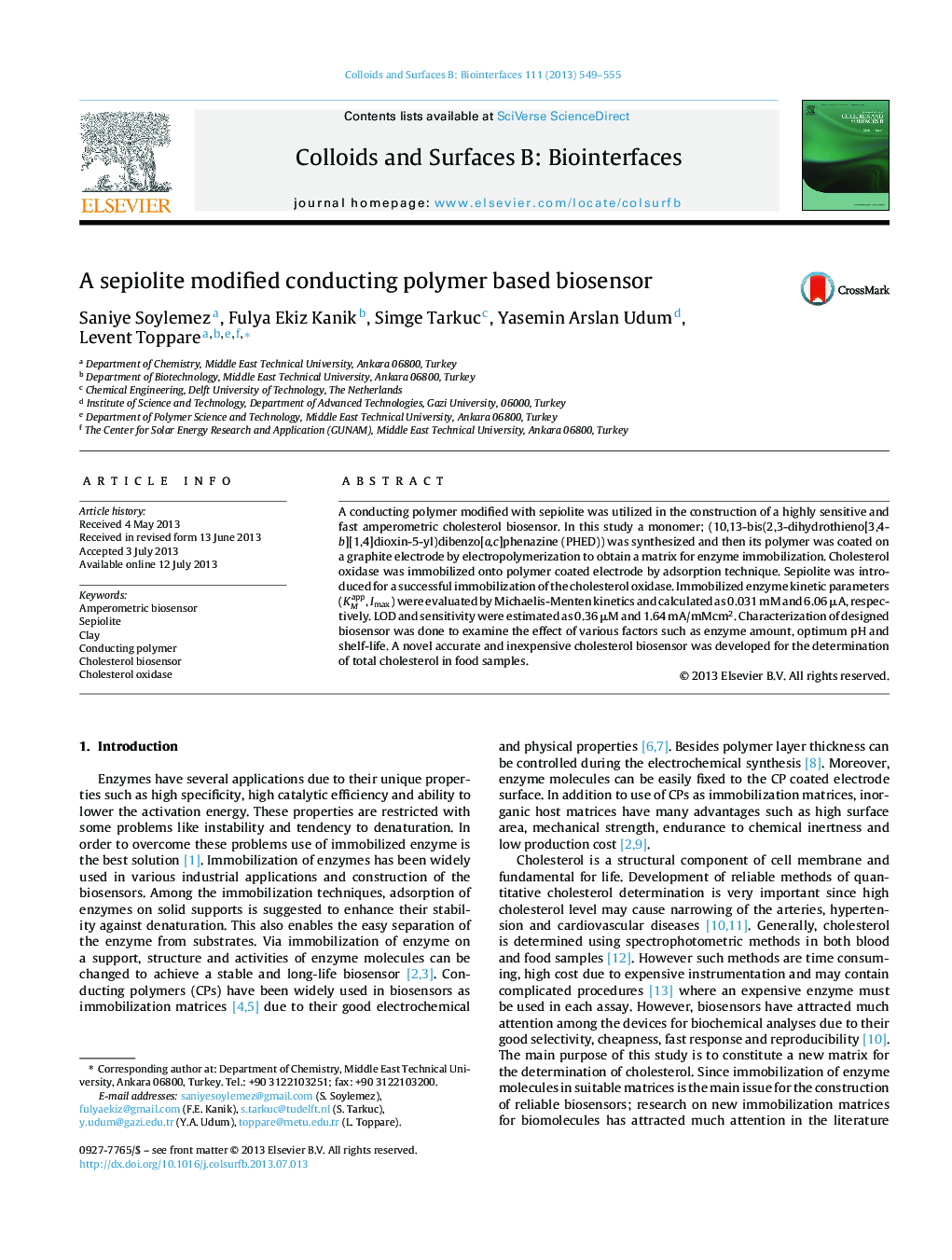| Article ID | Journal | Published Year | Pages | File Type |
|---|---|---|---|---|
| 599851 | Colloids and Surfaces B: Biointerfaces | 2013 | 7 Pages |
•A conducting polymer modified with sepiolite biosensor for successful biosensor applications.•Adsorption technique for beneficial enzyme immobilization.•Sensitive, reliable and long-life cholesterol biosensor.•Successful application for the determination of cholesterol in food samples.
A conducting polymer modified with sepiolite was utilized in the construction of a highly sensitive and fast amperometric cholesterol biosensor. In this study a monomer; (10,13-bis(2,3-dihydrothieno[3,4-b][1,4]dioxin-5-yl)dibenzo[a,c ]phenazine (PHED)) was synthesized and then its polymer was coated on a graphite electrode by electropolymerization to obtain a matrix for enzyme immobilization. Cholesterol oxidase was immobilized onto polymer coated electrode by adsorption technique. Sepiolite was introduced for a successful immobilization of the cholesterol oxidase. Immobilized enzyme kinetic parameters (KMapp, Imax) were evaluated by Michaelis-Menten kinetics and calculated as 0.031 mM and 6.06 μA, respectively. LOD and sensitivity were estimated as 0.36 μM and 1.64 mA/mMcm2. Characterization of designed biosensor was done to examine the effect of various factors such as enzyme amount, optimum pH and shelf-life. A novel accurate and inexpensive cholesterol biosensor was developed for the determination of total cholesterol in food samples.
Graphical abstractFigure optionsDownload full-size imageDownload as PowerPoint slide
